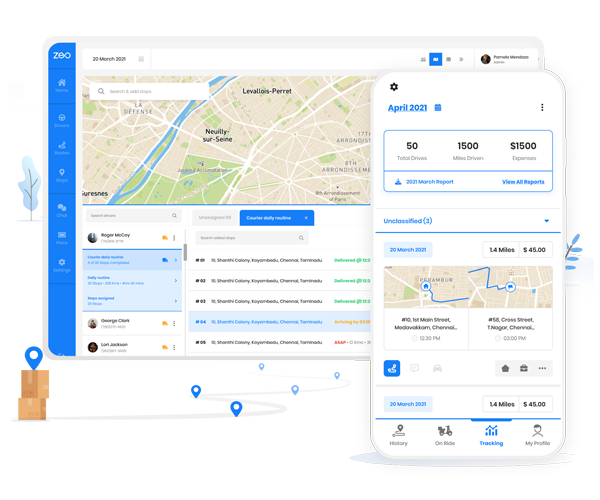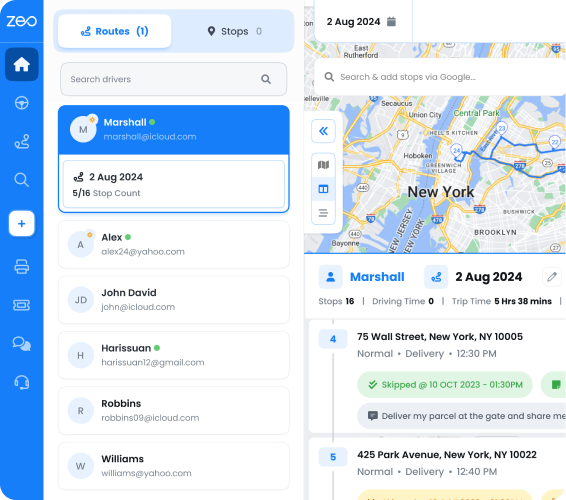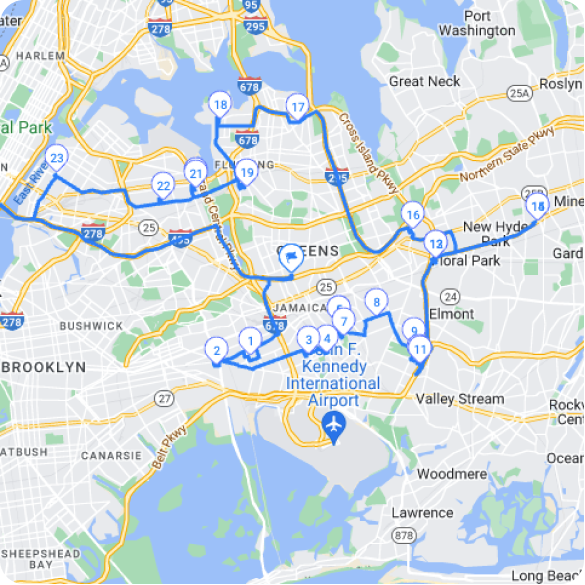Google Maps is well-known among users for navigating routes. With over two billion monthly users, Google Maps is used for everything — from daily commutes to holiday getaways and even finding accommodations.
On the other hand, some businesses use Google Maps differently. Those operating fleets for food delivery or taxis rely on the Google Maps API to integrate its power in coordinating their day-to-day logistics.
Yet, there are concerns about its data privacy.
There’s a report on how Google Maps data is shared with third-party servers. Also, Google paid a $391 million privacy fine (in 2022) for secretly tracking users’ location.
These privacy hiccups have pushed many users toward other better, more secure route-planning options.
Best Apps for Route Planning
Most people open Google Maps, punch in their destination, and trust its real-time traffic data to pick the smoothest path. However, there are other alternatives that businesses can use to protect their privacy.
Below, we’ll explore other best apps for route planning. These apps help businesses manage logistics teams, albeit with more privacy protection and in-depth route analytics.
-
Zeo Route Planner
Zeo Route Planner is built for delivery teams that handle multiple drop-offs daily. Its range of features optimizes routes by calculating the quickest sequence of stops. Thus, dispatchers, delivery personnel, and even customers can track and receive live updates.
Dispatchers can schedule tasks, tweak routes, and generate performance summaries without digging through complicated menus.
Key Features:
- Route optimization enables reordering to stop automatically based on the timing.
- Offer seamless navigation that helps track drivers’ location in real time.
- Live route tracking for smart decisions while controlling routes
- Enable proof of delivery on order completion
- Efficiently manage drivers by automatically assigning stops and allocating work based on skill.
Pros
- Powerful route optimization that easily reorders 100+ stops
- Live driver tracking and instant progress updates for dispatchers
- Offline mode lets teams continue navigating without cell signals
- Flexible analytics to see which routes save time and mileage
- Frequent feature updates guided by user feedback
Cons
- It may come across as too advanced for smaller delivery jobs
- The streamlined interface may appear basic compared to bigger brands
-
Circuit
A useful driver application and route planning tool that streamlines multi-stop deliveries for solo drivers and entire teams.
It sorts out the best sequence of addresses in seconds, and the driver app confirms each drop-off. Managers can view real-time progress on a dashboard to quickly spot any hiccups during the day.Key Features
- Adjusts routes based on live traffic data
- Enable drivers to add delivery notes for special instructions
- Sends arrival notifications to customers
- Scans barcodes for proof of delivery
- Syncs with online stores for direct order imports
Pros
increase fuel savings
Hassle Free Deliveries & Pickups!
Optimize routes with our algorithm, reducing travel time and costs efficiently.
Get Started for Free- Suitable for small teams needing a simple way to build routes
- Step-by-step prompts keep drivers confident on the road
- Automatic order imports cut out manual data entry
Cons
- Bigger operations might prefer deeper customization
- Complex orders can require a few manual tweaks
-
OptimoRoute
Another route and schedule optimization tools that enable delivery squads and field service providers by focusing on precise scheduling. You can use it to assign tasks based on a driver’s availability or location.
Managers can track each driver’s progress in real time and reshuffle tasks as needed for traffic, weather, or customer request change.Key Features
- Provides shift-based route creation for drivers
- Drag-and-drop editing for last-minute adjustments
- Automatic customer notifications with expected times
- Data exporting for a deeper look at performance
Pros
- Match driver schedules to routes in a straightforward way
- Handles large numbers of addresses without slowing down
- Provide detailed reports that help plan future deliveries
Cons
- Top-tier functions might need higher subscriptions
- New users will have a steep learning curve that demands time to learn advanced options
Features and Limitations of Using Google Maps
Businesses need powerful route planners that provide more than point-to-point guidance. Google Maps is a popular choice and ideal for casual travel, but companies may demand more than privacy.
It’s about picking a system that can handle large address lists, track progress in real time, and avoid unnecessary data sharing.
Let’s explore some of the major Google Maps features and where they might fall short so that you can decide whether to move to a more nuanced route planning system.
Features
Below are the key features that attract businesses to use Google Maps.
- Option to reorder stops: When new orders come in, or priorities change, you can reorder stops to cut down on wasted driving time
- Basic route customization: You can revise routes after you’ve set them, which is vital if a delivery changes location or a sudden road closure appears.
- Multi-stop support: Add a handful of destinations, though not always optimized for volume.
- ETA estimations: Google Maps can calculate estimated arrival times. Drivers and dispatchers can use these ETAs to plan better and communicate with customers.
Limitations
Now, let’s examine a few limitations of Google Maps that may make you consider using a route-planning tool instead.
- Some users don’t like the data logs and location tracking that come with using a Google account.
- Businesses that need to schedule dozens (or hundreds) of stops may struggle with manual input and limited optimization.
- In-depth analytics for cost-saving and performance aren’t built into the default system.
- Updating routes on the fly can be tedious if it requires assigning stops to drivers based on their skills in the middle of the day to manage workload.
- There’s no specialized pathing for trucks or other large vehicles.
- Google Maps doesn’t offer advanced fleet management or driver assignment features.
- Certain fleet-friendly functions, like driver performance reports, remain absent.
Conclusion
Route planning tools are the behind-the-scenes heroes of any delivery network. Google Maps does a solid job for everyday navigation, but dedicated platforms can offer more privacy controls and bigger toolkits for teams with constant deliveries.
If you’re looking for options that balance speed, clear data, and user-friendly design, Zeo Route Planner is worth a look.
Book a demo to see how it can effectively help you tackle modern delivery demands head-on. It can give your business much-needed control over delivery schedules while guarding sensitive data.

Are you a fleet owner?
Want to manage your drivers and deliveries easily?
Grow your business effortlessly with Zeo Routes Planner – optimize routes and manage multiple drivers with ease.

increase fuel savings
Save 2 Hours on Deliveries, Everyday!
Optimize routes with our algorithm, reducing travel time and costs efficiently.
Get Started for Free
























